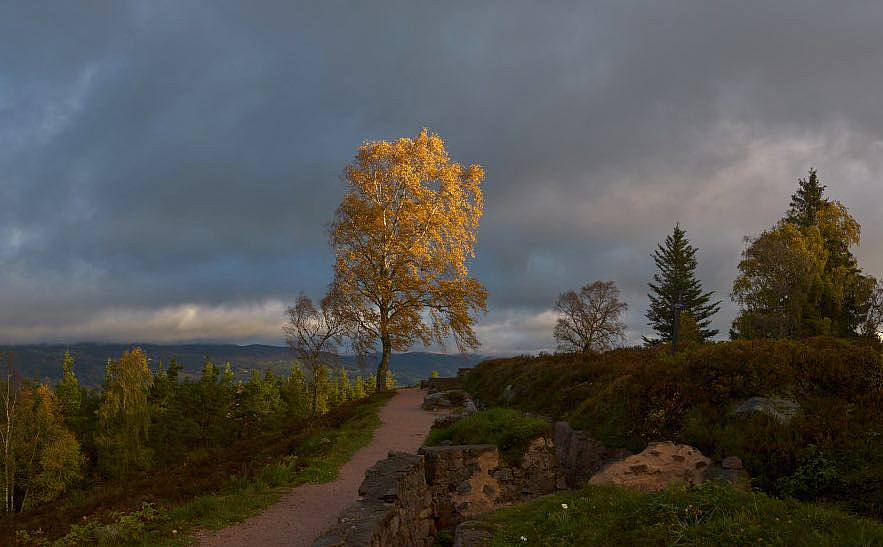Creyghton & Van Duijnhoven
Hindenburgline Project
through 21 Aug 2016
An ode to the resilience of man and nature
A hundred years ago, World War I was raging throughout Europe. Over the past few years, the photographer L.J.A.D. Creyghton and the Brussels-based writer/poet/historian Serge R. Van Duijnhoven have followed the Western Front's Hindenburg Line, a frontline which spans a thousand kilometers, from Nieuwpoort to Pfetterhouse near the Swiss border.
Their guide during this journey consisted of the personal notes, letters and diaries of the men who defended their countries in the trenches from 1914 to 1918. Even under the most miserable circumstances, some never lost touch with empathy and compassion. From the front along the Somme, an Irish volunteer, for instance, writes the following on 1 July 1916: 'I found a German, badly wounded. I could see from his face that he was mad with thirst. I gave him my water, although it was against orders. Then I found one of our men; he was terribly wounded, (...) He begged me to kill him, but I couldn't do it. (...) I made up my mind that, if I ever got out of it alive, there wasn't enough gold in the Bank of England to get me back again.' At Cuisy, on Wednesday 2 September 1914, a French soldier saw two of his wounded countrymen being aided by a German cavalryman. These memories add an extra dimension to the tranquil landscape photographs by L.J.A.D. Creyghton. An innocuously rippling stream in the region surrounding the Somme, or an undulating landscape with fields of grain in the vicinity of Cuisy—in the photographs we see practically no traces of the gruesome acts of war. No war monuments or cemeteries are visible, only the overgrown remnants of trenches here and there. On the snowy Col du Bonhomme in the Vosges region, nothing reminds us of the years of intense combat between the German and French armies. In 1914, along the border between Alsace and Lorraine, the Route des Crêtes was built in order to supply the French. Bellum transit, natura manet (war passes, nature remains) writes Van Duijnhoven. The remnants of war become overgrown and, slowly but surely, vanish into the landscape. Creyghton and Van Duijnhoven regard the Hindenberg Line Project as an ode to the resilience of man and nature. The photographs, texts and poems bring attention to this self-correcting capacity as a great force of time and nature. "If we had only spoken the same language!" is the title given to the book about the Hindenburg Line Project. This heartfelt cry was found by the authors in the diary of a French soldier. But whether a common language could have prevented the war? That remains open to discussion. In addition to seventy-five landscape photographs by L.J.A.D. Creyghton as well as poetry and prose by Serge R. Van Duijnhoven, the book contains literary contributions relating to the theme of the Flemish and Dutch authors Jozef Estes, Johan van de Gronden, Jan Haerynck, Geert van Istendael, Tom Lanoye, Gwy Mandelinck, Pim Milo, Nelleke Noordervliet, Mirjam Rotenstreich, prof. dr. Alex Vanneste, Frank Westerman and Tommy Wieringa. Price during the exhibition: € 45,00.
Their guide during this journey consisted of the personal notes, letters and diaries of the men who defended their countries in the trenches from 1914 to 1918. Even under the most miserable circumstances, some never lost touch with empathy and compassion. From the front along the Somme, an Irish volunteer, for instance, writes the following on 1 July 1916: 'I found a German, badly wounded. I could see from his face that he was mad with thirst. I gave him my water, although it was against orders. Then I found one of our men; he was terribly wounded, (...) He begged me to kill him, but I couldn't do it. (...) I made up my mind that, if I ever got out of it alive, there wasn't enough gold in the Bank of England to get me back again.' At Cuisy, on Wednesday 2 September 1914, a French soldier saw two of his wounded countrymen being aided by a German cavalryman. These memories add an extra dimension to the tranquil landscape photographs by L.J.A.D. Creyghton. An innocuously rippling stream in the region surrounding the Somme, or an undulating landscape with fields of grain in the vicinity of Cuisy—in the photographs we see practically no traces of the gruesome acts of war. No war monuments or cemeteries are visible, only the overgrown remnants of trenches here and there. On the snowy Col du Bonhomme in the Vosges region, nothing reminds us of the years of intense combat between the German and French armies. In 1914, along the border between Alsace and Lorraine, the Route des Crêtes was built in order to supply the French. Bellum transit, natura manet (war passes, nature remains) writes Van Duijnhoven. The remnants of war become overgrown and, slowly but surely, vanish into the landscape. Creyghton and Van Duijnhoven regard the Hindenberg Line Project as an ode to the resilience of man and nature. The photographs, texts and poems bring attention to this self-correcting capacity as a great force of time and nature. "If we had only spoken the same language!" is the title given to the book about the Hindenburg Line Project. This heartfelt cry was found by the authors in the diary of a French soldier. But whether a common language could have prevented the war? That remains open to discussion. In addition to seventy-five landscape photographs by L.J.A.D. Creyghton as well as poetry and prose by Serge R. Van Duijnhoven, the book contains literary contributions relating to the theme of the Flemish and Dutch authors Jozef Estes, Johan van de Gronden, Jan Haerynck, Geert van Istendael, Tom Lanoye, Gwy Mandelinck, Pim Milo, Nelleke Noordervliet, Mirjam Rotenstreich, prof. dr. Alex Vanneste, Frank Westerman and Tommy Wieringa. Price during the exhibition: € 45,00.


